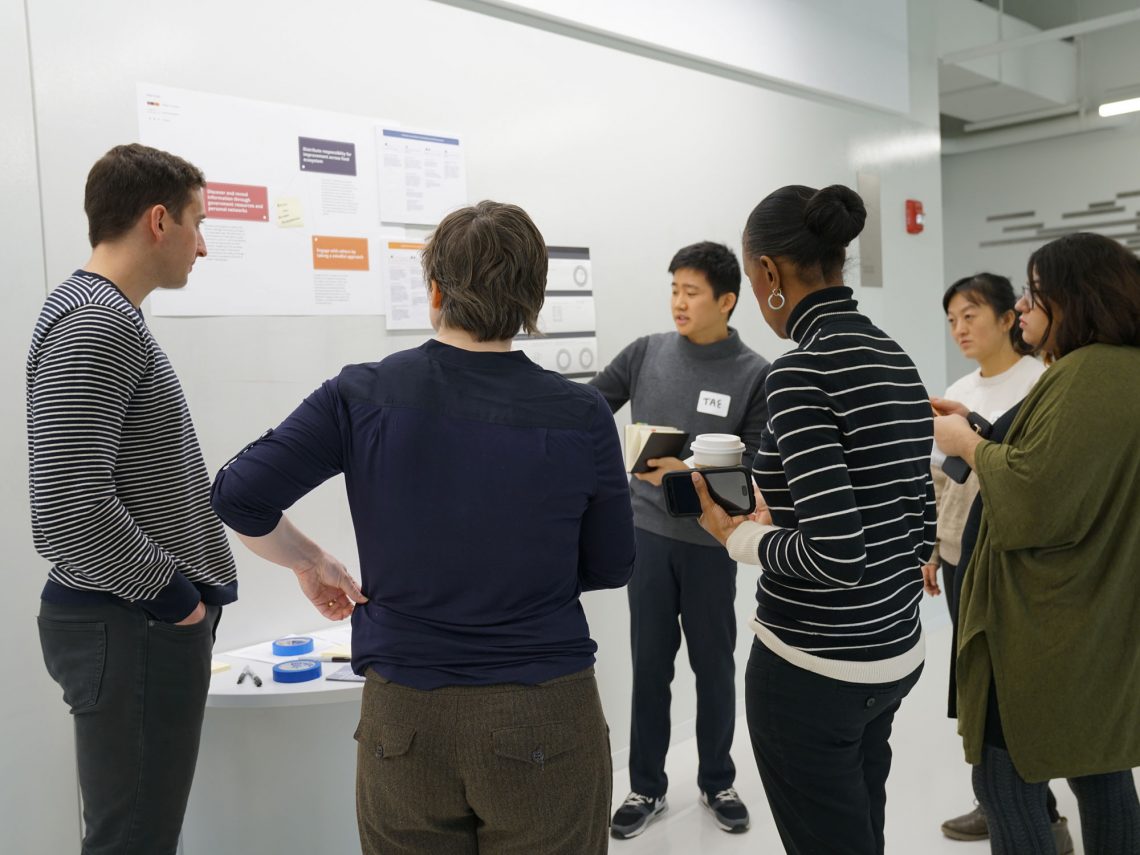
As consumers, we rarely think about electricity—until it isn’t there. We plug a cord into an outlet and expect it to produce power. But the system that delivers energy to our phones, appliances, and lights is built on 150-year-old technology that’s being pushed to its limits. And when the system gets overloaded, the results can be devastating.
Take, for instance, the winter storms that left 4.5 million Texas homes and businesses without power as freezing temperatures and snow blanketed the state in February 2021. Millions of Texans had no heat, water, or lights for days because extreme weather caused by climate change had reduced the total power generation capacity for the main state electricity grid by half.
Blackouts are just the beginning of the problems when it comes to the way we generate and distribute energy. About 60 percent of electricity generated in the US comes from facilities that burn fossil fuels—coal, natural gases, petroleum, and other gases—to produce energy. This polluting, aging, increasingly unstable, and underfunded infrastructure also requires maintenance (the costs of which are passed on to consumers) and is susceptible to cyberattacks.
A unique perspective on a complex problem
What role does design play in greening our electricity system? How can it address contemporary challenges at the intersection of social, environmental, and economic systems?
Students at ID responded to these questions, using design to envision a more sustainable energy infrastructure during Carlos Teixeira’s 14-week Sustainable Solutions Workshop.
Designing and planning for an optimized energy infrastructure of this scale, composed of myriad interdependent and connected systems, is an extremely difficult task. The sheer complexity of it can stymie its pursuit and ultimately delay our transitions to new, resilient, and sustainable energy futures. Perseverance and tenacity is the name of the game here: transitioning to a more sustainable energy future cannot be achieved through fragmented efforts. Instead, we must purposefully align the products, services, organizations, and policies at all levels of this system.
The Illinois Tech Mies campus provides a useful model for such thinking: to tackle global issues, ID students started thinking locally. They built on the existing work of their friendly neighborhood microgrid, which powers buildings, eliminates costly outages, minimizes power disturbances, moderates an ever-growing demand, and curbs greenhouse gas emissions.
If the ultimate goal is to mitigate climate change by transitioning to a renewable energy system, you have to start with rethinking the systems of delivery. You have to reimagine the electricity grid itself.
Taking on the system
The first step in such a process is generative prototyping, a design practice that focuses on experimentation and learning through doing. Through cycles of rapid iteration, students built physical objects to communicate ideas, generate questions, and provoke critique. These physical objects helped make the problem tangible. The process also allowed students to explore sustainable solutions through different lenses such as equity, circular economy, and anti-racism. With multiple rounds of prototyping with mixed teams, students shared ideas and ownership of the solution—all with minimal bias.
The resulting design models (expressed as anatomy of infrastructure, archetypes, and action situation) were used to consider three core questions:
- How can microgrids support production, consumption, and disposal of energy to minimize environmental disruption and ensure energy resilience?
- How can microgrids create and activate local resources and grow local economies?
- How can microgrids create equitable modes of communal engagement?
In other words, what is necessary to realize the promise of the microgrid as a civic infrastructure, one that binds communities to self-organize and holds themselves collectively accountable for making purpose-driven choices?

Actionable thinking
There is no one answer to this question, and part of the value of an exercise like this is that process—that is, the thinking behind the solutions—is as essential as the proposals it generates. We have to understand the situation and imagine alternatives before we can move to action.
The one-way production and consumption paradigm that dominates our energy infrastructure today is ripe for disruption. Instead, students considered alternative systems that would emphasize collective ownership of resources and mutual accountability between users and organizations.
Imagine smart buildings powered by algorithms that factor in weather to determine when to generate electricity without saturating the grid. Communities could repurpose their unused spaces ( roofs, empty lots, yards) to create renewable energy micro-generation. In this vision, investors reward entrepreneurship and innovation by creating incentives that encourage new energy consumers to participate in energy creation, thereby supporting the transition to renewable energy.
Other design interventions reduce the barriers to access quality services, create marketplaces for energy trading, aid financial planning and wealth generation, strengthen community ties, and provide food and shelter.

Enter one such intervention: the Energy Hub Co-op. This people-centered enterprise develops a new value model by offering transactions like matching, trading, buying, or providing services, enabling new opportunities for community members to offer and advance their technical expertise in exchange for credits, which can in turn be redeemed to acquire microgrid technologies or other services. Among the innovative community-facing services provided outside the Hub, nutri-kitchens are an amalgamation of food lockers, dining zones, and self-help counters protected from extreme weather.
The shift to more localized decision-making, along with decentralized ownership and exchange of resources, can advance democratization of energy production. But this distributed agency is only possible when communities can develop the necessary capabilities, resources, and platforms that help to understand, debate, and participate actively in creation and evolution of their civic infrastructure.

Picture digital community squares that aggregate and facilitate communal conversations and decision-making. Embedded algorithms visualize community data that can be used to address emerging needs. Ethereum blockchain, for example, could enable autonomous and asynchronous decision making for policymaking through personal devices that act as passports.
Next steps: preparing for a paradigm shift
While these proposals are meant to enable new actions, they are not sufficient to create change in isolation. To actually create change, students identified two major strategies and corresponding tactics for preparing communities to shift to new energy models and drive the paradigm shift necessary to realize sustainable energy infrastructures:
- Normalize active participation in energy transition. Provide tools and technology that grant consumers the power to engage in decision making:
- Community-oriented trading, for instance, could transform community members from passive consumers of energy monopolies to active participants in the market for the good of their community.
- Energy justice education would equip community members to understand, debate, and participate actively in the creation and evolution of the civic infrastructure, from energy generator installation to shaping economic opportunities.
- Encourage informed, cooperative, and responsible consumption. Behavioral nudges and economic incentives can help guide consumers toward more desired and sustainable behaviors:
- Adopt new mental models for understanding our relationship to energy so that the inequities embedded in our current energy infrastructure aren’t repeated. Credit systems, energy labels and storage banks, along with incentives, will drive us to think of energy as more than just a commodity and promote collective energy stewardship.
- Invest in data-enabled intelligence to increase adaptive capacity and make collaboration easier. Appliance optimization systems learn and adapt, smart meters respond to emerging needs in real time, and ethical algorithms, Ethereum blockchain, and open source databases support expanding energy democracy.
- Diversify energy production, transforming grey energy into usable electrical energy and utilizing unused spaces in buildings to generate power.
Ultimately, students emerged from the workshop certain that design approaches can shape a new energy paradigm that benefits not only the environment but also the people connected to the grid.
While not blueprints, these solutions and thinking can move us all forward, informing new approaches as we pursue a healthier relationship with energy.
Tags:
Students
- Gauri Bhatt
- Mithila Kedambadi
- Mrinali Gokani
- Monica Villazon San Martin
- Kelvin Yu
- Zeya Chen
- Samar Elhouar
- Catherine Wieczorek
- Alpha Wong
- Zack Schwartz
- Veronica Paz Soldan
- Siwei Sun
Faculty
Teaching Assistant
Guest Contributors
- Weslynne Ashton
- Christopher Rudd
- Ruth Schmidt
- Gretchen Bakke
- Gerry Derksen
- Jessica Jacobs


